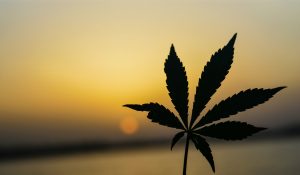
Hemp and marijuana cultivators in the Pacific Northwest are adopting new work restrictions to protect employees during this summer’s record-breaking heat.
The additional rules – which take effect Tuesday in Washington and began last Thursday in Oregon – were adopted after temperatures reached “catastrophic levels,” according to Washington Gov. Jay Inslee.
A 38-year-old Oregon farmworker collapsed and died in 115-degree heat last month while on a crew moving irrigation lines in the Willamette Valley. The Oregon medical examiner attributed the death to excessive heat.
Oregon’s new rules – which cover outdoor hemp and marijuana cultivation – include expanded access to shade, cool water and breaks during periods of heat.
“In the face of an unprecedented heat wave in the Pacific Northwest — and tragic consequences — it is absolutely critical that we continue to build up our defenses against the effects of climate change, including extreme heat events,” a spokesman for Oregon’s occupational safety agency, Andrew Stolfi, told The Associated Press.
Hemp and marijuana growers in the region told Hemp Industry Daily that the precautions are overdue, and that responsible farmers have already made changes to account for the heat.
At Lynbo Farms, a 2-acre outdoor craft hemp flower producer north of Vancouver, Washington, operators adjusted watering times, giving the plants a deep watering before the heat arrived and leaving drip hoses on at night.
“So far, all my girls are doing OK,” owner Lyn Larson-McCann told Hemp Industry Daily. “We’re making adjustments where we can, watering at night and working in the early morning.”
She said the extreme weather has brought one upside: weed suppression, because the sun’s sizzle is too much for some weeds in her area.
Still, she has headlamps on hand in case her two to three employees need to quit work during daylight hours entirely.
“We can weed in the wee hours of the morning if we have to,” she said.
At Fresh Green Organics in Klamath Falls, Oregon, owner Rick Walsh is accustomed to shifting hours to 5 a.m. in the midsummer and adding cooling breaks.
A longtime grower of microgreens and herbs before adding hemp to the mix four years ago, Walsh keeps a packing room at 50 degrees and orders overheated employees to rest there when temperatures soar.
“We explained to everybody to drink lots of water, to cool down when they can. And if you start feeling sick, go straight to the packing room,” Walsh said.
Still, he’s seen his flower hemp varieties suffer a bit despite extra water and care.
“They can show some stress. The flowers don’t seem to fill out quite as much,” he told Hemp Industry Daily. “I’m hoping it cools off here soon.”
The emergency heat precautions in both states last 180 days.
At East Fork Cultivars, which grows hemp and marijuana in Takilma, Oregon, COO Aaron Howard told Hemp Industry Daily that this summer’s heat dome in the Pacific Northwest is just the latest example of extreme climate events threatening agricultural businesses in the region. The business narrowly escaped fire damage last year.
“Going into a second year of drought, my concerns are keeping people safe and not having more wildfires.”
Kristen Nichols can be reached at [email protected].

